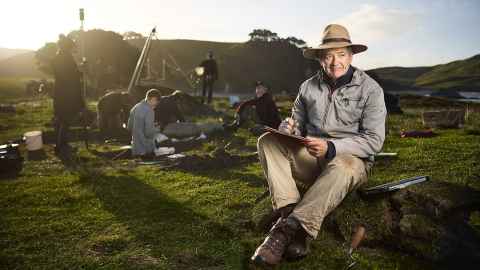Archaeology project on Ahuahu reveals ancient gardening practices
31 May 2019
Excavations by Professor Simon Holdaway and an archaeological team reveal sophisticated crop planting by ancient Māori.

An archaeological research project on Ahuahu Great Mercury Island unearthed a significant finding that changes what we know about pre-European Māori gardens.
Previous archaeological evidence identified kumara as the most significant crop from early New Zealand but new research, which explored the history of Māori settlement on the island, shows taro was also an important crop in the early Māori diet, alongside other leafy greens such as pūhā and watercress.
During extensive field work on the private island off the eastern coast of Coromandel, researchers found sediments in swamps that contained taro pollen. Archaeology Professor Simon Holdaway led the team of University colleagues, Professor Thegn Ladefoged and Dr Rebecca Phillipps, as well as archaeologist Dr Louise Furey from Auckland War Memorial Museum and palynologist Dr Matthew Prebble of Australian National University. Their work dated the taro pollen to 600-700 years ago.
The discovery reveals the sophistication with which early Māori first used the environment, including developing wetland gardens for taro.
Simon says archaeologists long considered our cooler climate hindered early attempts by Māori to grow traditional Polynesian crops such as taro.
“This evidence for early taro production refutes the long-held view that taro was only a minor component of early horticulture,” he says. “It indicates tūpuna Māori may have initially focused on taro and created specialised wetland gardens for the purpose; kumara then became the main crop after AD 1500.”
It’s now thought Ahuahu was used for gardens because of the similarity to the wetland gardens on some Polynesian islands. The project on Ahuahu is a partnership between the University of Auckland and Auckland War Memorial Museum, in conjunction with Ngāti Hei and donors, the Fay and Richwhite families.